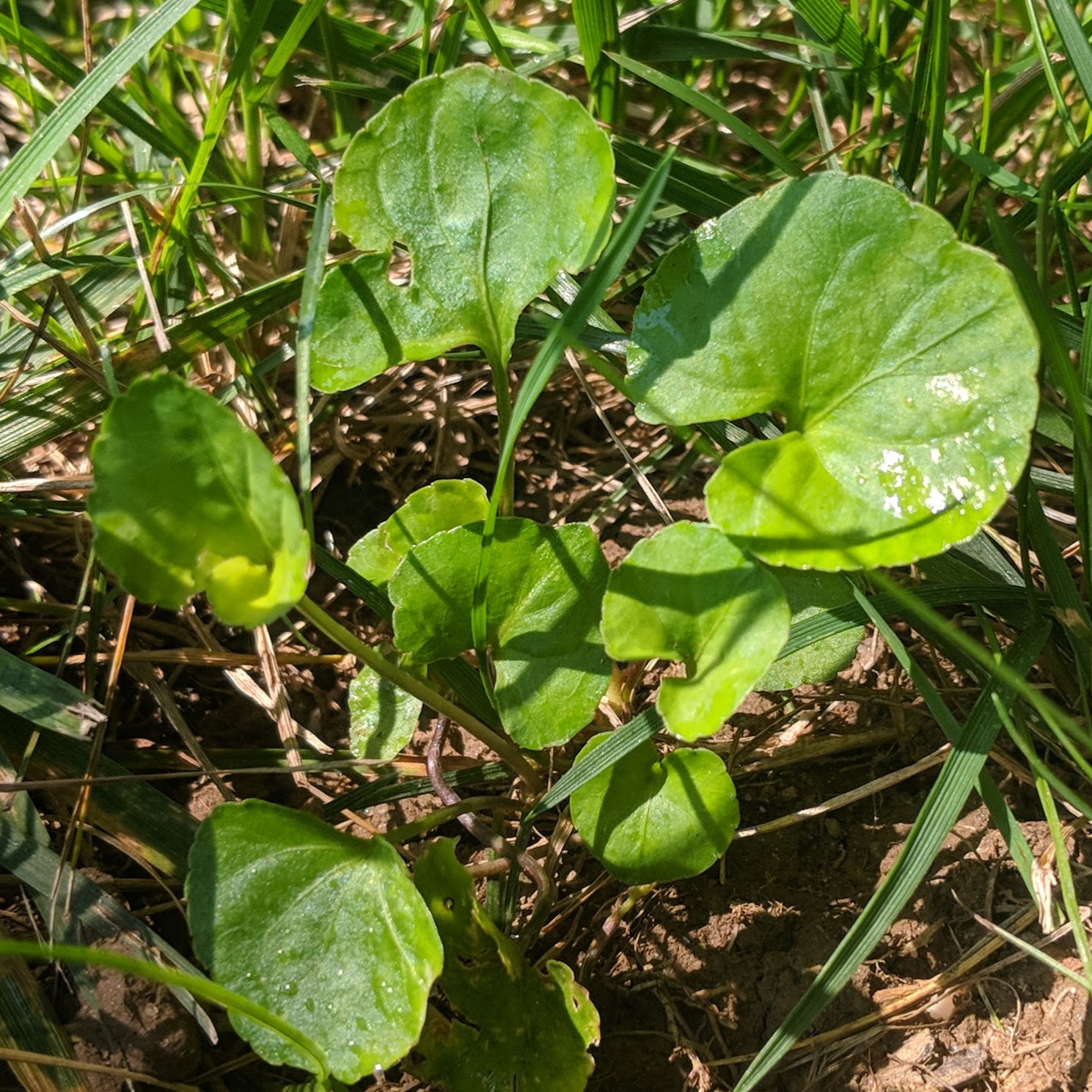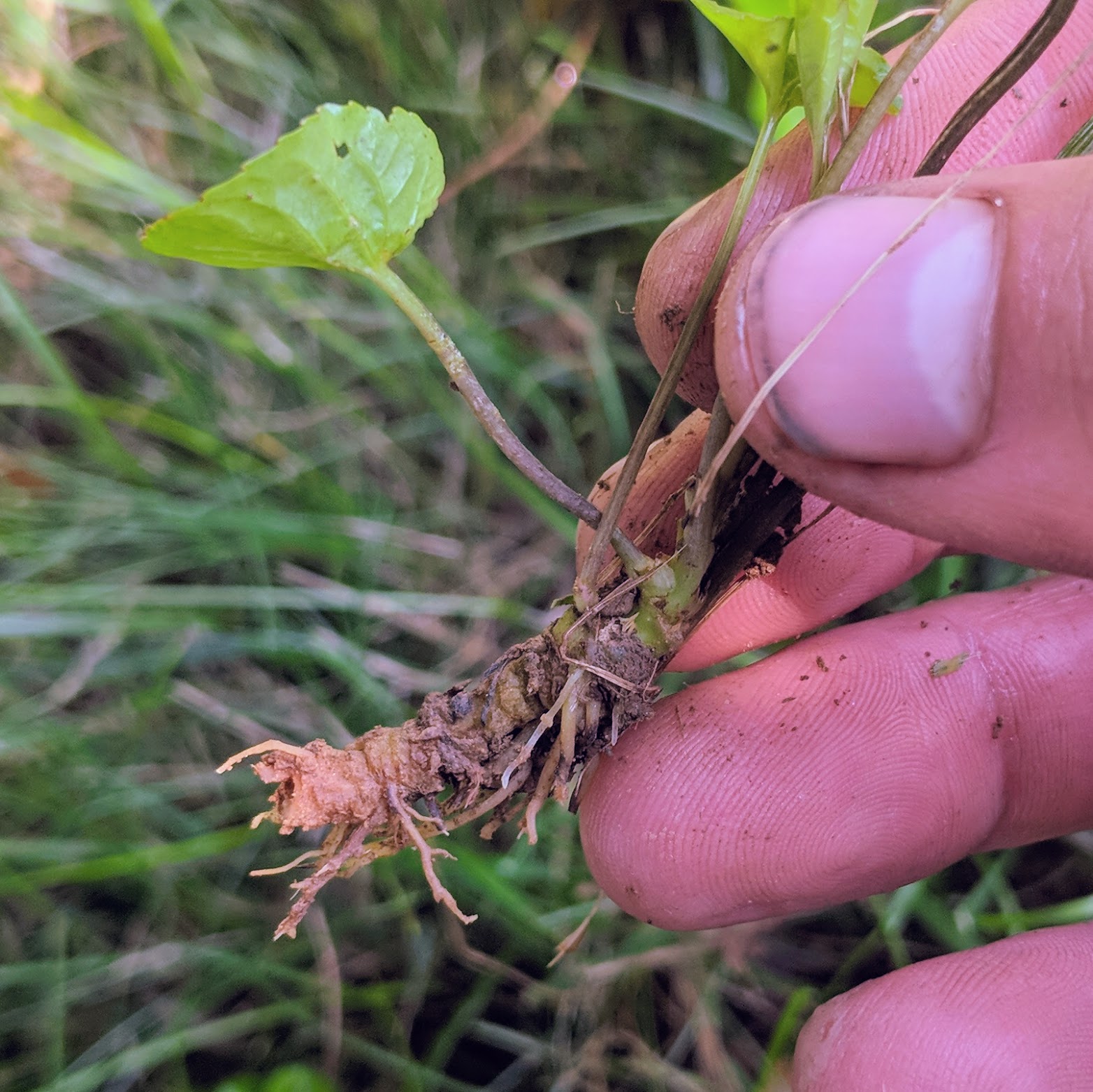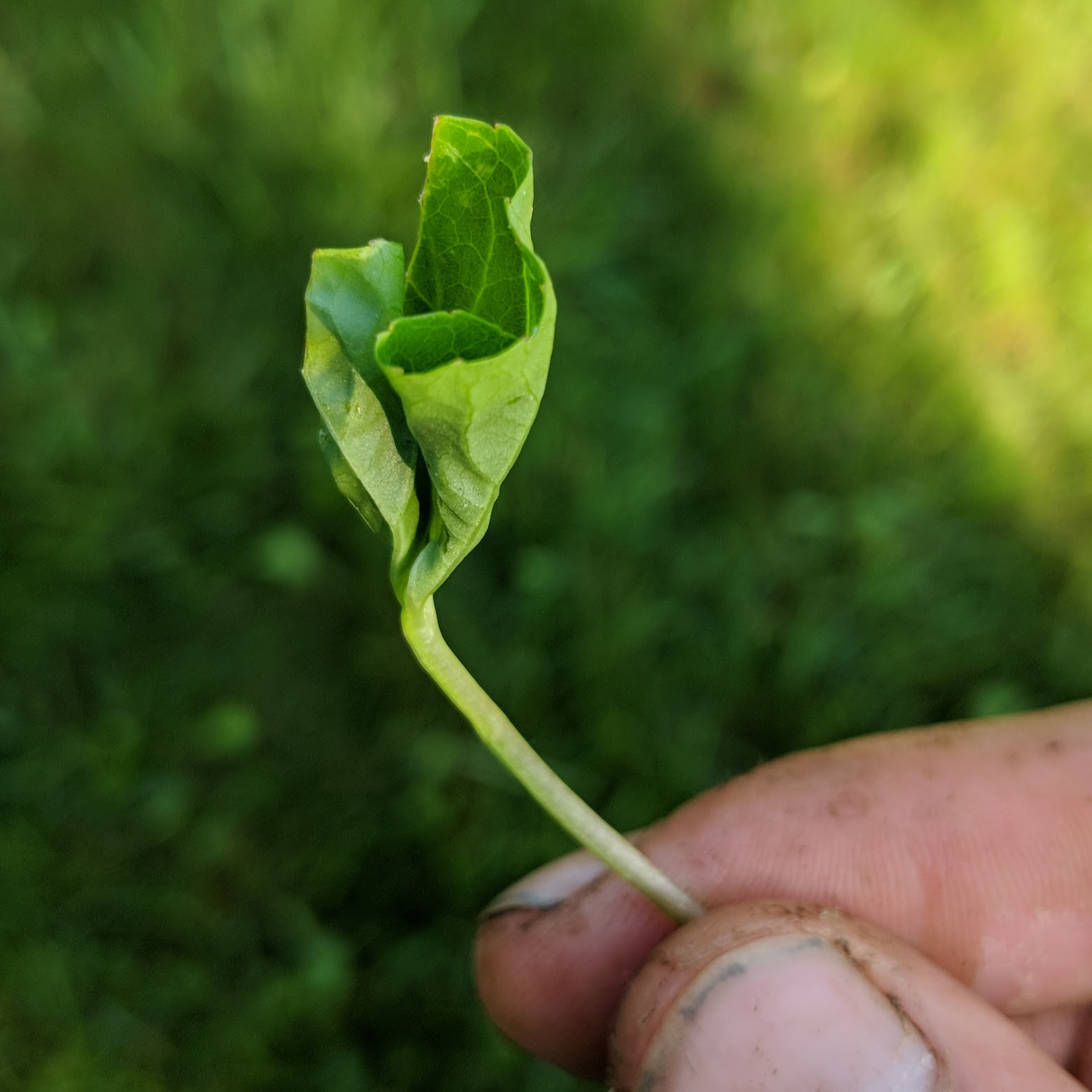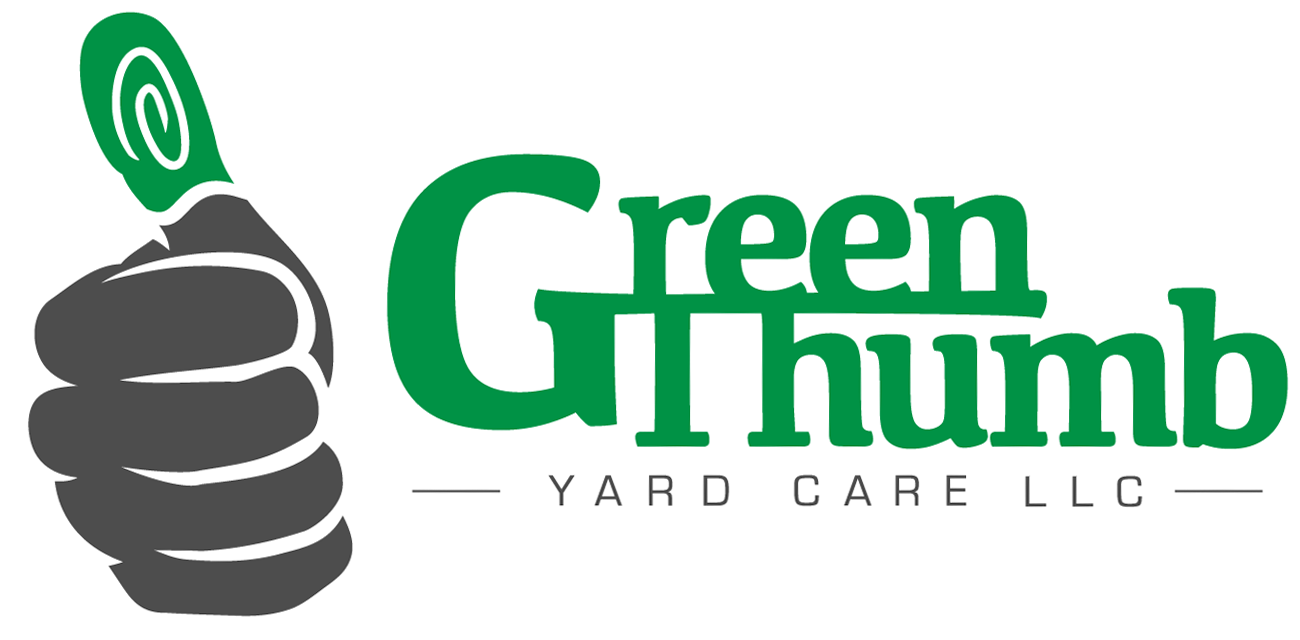Common Violet: Identification and Treatment
Common violet is a very persistent weed in shady Mid-Atlantic lawns. It is easy to identify with it’s heart shaped leaves and purple flowers. Getting rid of it is a little harder, though.
Common violet, or meadow violet, is common in shady lawns. You will usually find it around trees, where the amount of sunshine is limited. Controlling this weed has given me problems in the past but the program I have created does a decent job at reducing the amount of meadow violet seen in the lawn.


Description
Common violet grows low to the ground. The tallest plants are only about 8 inches. In the lawn, common violet is usually shorter than the grass.
Heart-shaped leaves make this weed very easy to identify. When the purple flowers are in bloom, April through June, it is a dead give away that you are battling common violet.
It typically grows in patches. As the plant becomes more mature and established, the patches grow larger and larger in size.
Common violet uses thick underground rhizomes to reproduce. The dense network of rhizomes can make treating this weed very difficult and contribute to its hardiness.
Common violet does not die with frost. However, the leaves will rot under snowfall from lack of light. Since this is a perennial weed, you will see it again in the following year.
Moist, cool microhabitats are where this weed thrives. But once it is well established, common violet is very hardy and can even tolerate dry soils.
Treatment and Prevention
Getting rid of common violet is a challenge, even for professional landscapers. However, I have formulated a decent program that is focused on preventing common violet before it gets out of hand. Like I have mentioned in other posts, preventing weeds and eliminating the viable seed bank is what I believe to be the most environmentally friendly option.
In spring, before weeds start to appear, I use dythiopyr or prodiamine as a pre-emergent solution. Both herbicides provide 6-8 weeks of weed prevention and do a great job of reducing the number of weeds that germinate. To make sure that your expectations are realistic, you should know that some weeds will still grow in your lawn! But, you still save time and money with fewer herbicide applications. It also allows you to spot treat any weeds rather than perform a broadcast application.
Throughout the year, I will monitor customers’ properties and spot treat any problem areas as they appear. For these applications, I use 2, 4-D or quinclorac. Both of these products work well, but I think that quinclorac has the upper hand. On the right, you can see how the common violet is curling and dying just 1 day after a quinclorac application!
About halfway through the growing season, early to mid summer, I will make another broadcast pre-emergent application using one of the pre-emergents listed above. This helps me keep a hand on the number of weeds that grow in the lawn. For the remainder of the year, I only spot treat problem areas.

